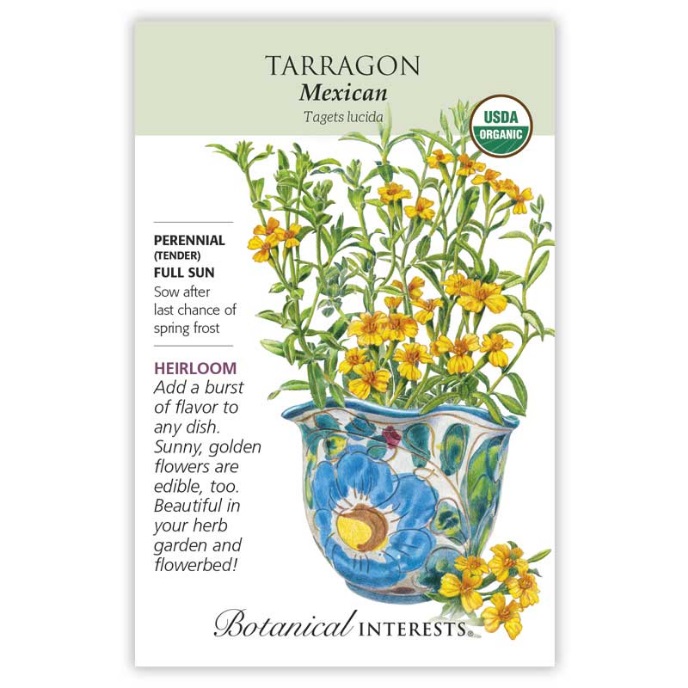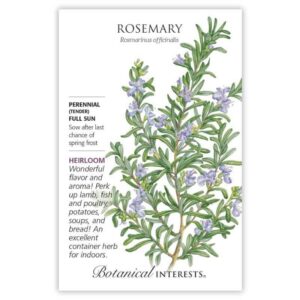Description
Mexican Tarragon (also known as Mexican Mint, Spanish Tarragon, or Winter Tarragon) offers an anise-like flavor, making it a perfect substitute for French tarragon in cooking. This easy-to-grow herb thrives in heat and humidity, is drought-tolerant, and produces strong-flavored leaves, so less is required to enhance your dishes. The plant grows up to 24″ tall and is an excellent choice for containers, thriving indoors during the winter. Native to Mexico and Central America, Mexican Tarragon also attracts pollinators and is deer resistant.
This packet sows up to 33 feet. 200 seeds.
Variety Info:
Botanical Name: Tagetes lucida
Family: Asteraceae
Native: Mexico and Central America
Hardiness: Perennial in USDA zones 8–11
Plant Dimensions: 24″ tall, 12″–15″ wide (In warm climates, plant may grow up to 36″ tall with woody stems.)
Variety Information: 3″ long, green, narrow, oblong leaves. Clusters of ½” golden flowers held atop foliage.
Exposure: Full sun
Attributes: Drought Tolerant, Good for Containers, Attracts Pollinators, Deer Resistant
Sowing Info:
When to Sow Outside: 1 to 2 weeks after your average last frost date, and when soil temperature is at least 60°F.
When to Start Inside: RECOMMENDED. 6 to 8 weeks before your average last frost date. Ideal soil temperature for germination is 70°–80°F.
Days to Emerge: 8–12 days
Seed Depth: 1/8″
Seed Spacing: A group of 6 seeds every 12″
Row Spacing: 24″
Thinning: When 1″ tall, thin to 1 every 12″
Growing Info:
Harvesting: If harvesting small amounts or for seasoning, harvest leaves before the blooms appear on plants. For larger amounts, cut 3″–4″ pieces from branch tips. Do not harvest more than 2/3 of the plant at a time if you want it to continue producing. Entire stems may be harvested and hung upside down to dry for later use. If the stems are harvested with the flowers are intact, they may be used in dried floral arrangements.




